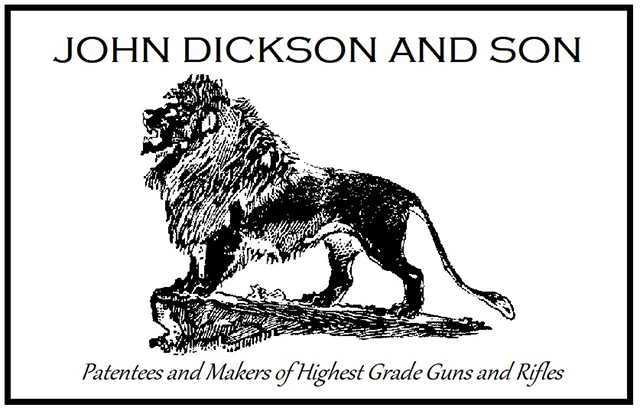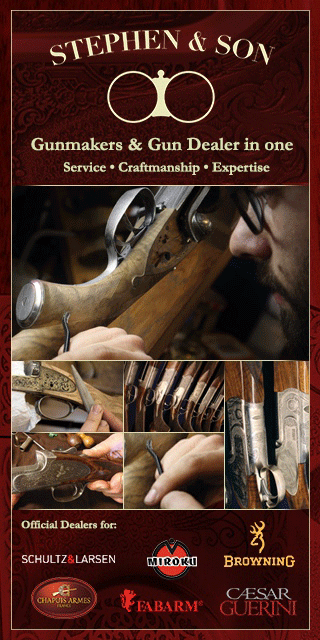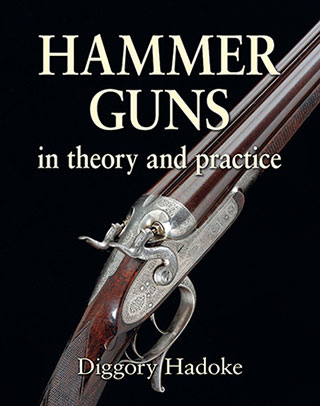What is proof?
Proof is a safety test that all new guns in the UK have to pass in order to be offered for sale. It must be carried out by either the London Proof House or the Birmingham Proof House.
First the gun is inspected (called ‘View’). If it passes this visual inspection, it is then tested by placing the barrelled action in a special holder and fired twice through each barrel. The proof charge is of 25-30% higher pressure than the maximum pressure any commercially loaded ammunition can generate. Since most commercial ammunition loaders load with a 20% margin for error (i.e 80% of maximum allowable pressure) that leaves a 45-50% safety margin.
Proof shows your gun is safe to use with any commercially loaded ammunition you may put in it. It also tells you how much pressure your gun is built to handle.
When is a gun out of proof?
A gun is considered ‘out of proof’ when the barrel is materially altered or damaged (for example, there is a hole in it or the chambers have been extended). It is also considered out of proof when the bore size reaches ten thousandths of an inch in excess of the size stamped at proof. For example, a 12-bore proofed at .729” will be out of proof when it reaches .739”. The reason for bore enlargement is usually because the bore has rusted in storage and had to be polished clean, thereby removing metal. Every time this happens, the bore gets bigger.
What is the legal position?
It is illegal to offer for sale a gun in the UK that is out of proof. It is also illegal to try to export an ‘out of proof’ gun.
How do you measure for Proof?
The bore size measurement is taken 9” from the breech. A special tool is required, called a bore gauge. It is a simple calibration. You read the latest proof mark on the barrel flat, which was stamped there by the proof house. You then set your gauge to that size.
Insert the gauge 9” into the breech and turn the handle. This opens the end of the rod until it comes into contact with the barrel walls and cannot open further. The dial will indicate, in thousandths of an inch, the difference between the two points.
For example, if the gun was proofed at .729” and now reads .734” you can see that it has been enlarged by five thousandths of an inch and is still in proof. If it reads .741” you can see it is twelve thousandths of an inch larger than the last proof stamp and is therefore three thousandths of an inch (three thou’) out of proof.
The proof act does not cover wall thickness...
What about wall thickness?
The proof act does not cover wall thickness, though for most practical purposes, wall thickness is more important than bore size (as long as the gun is still in proof). The proof act assumes that if a barrel can pass proof, it is strong enough. If it is strong enough, the walls are ,by definition, thick enough. The idea being that very strong high-quality steel that can withstand the proof test when made thin should prevail, while poor quality steel that cannot pass even when relatively thick should still fail.
However, barrel wall thickness indicates the life left in the barrels. Thin barrels dent more easily and barrels with thin spots are more likely to induce bulges and failure in use. Because re-barrelling is beyond economic feasibility for most old guns, costing multiples of the gun’s value, barrel wall thickness directly affects a gun’s commercial value by a large factor.
To measure wall thickness, you need a wall gauge. There is no other reliable way of doing it. They cost from £250-£750 but most gun shops dealing in older guns will have one.
The gauge is used to measure the barrel wall all over its surface (though there is a ’blind spot’ between the ribs, where the gauge cannot measure). The gauge is a simple tool, with a ball bearing on a rod, which goes into contact with the outside wall and a vertical rd with a spring onto which the barrel is placed, the rod inserted in the bore, muzzle down.
The dial reads the space between the sprung blade on the inner rod with the ball bearing at the tip of the outer rod. The measurement is given in thousandths of an inch. You run the barrels carefully up and down the gauge, watching the reading all the time and slowly turning the barrel to ensure you cover the entire available surface.
The lowest point the dial reads is the minimum barrel wall thickness. This is the measurement expressed by dealers and auction houses when asked about wall thickness.
The UK gun trade considers barrels under 23 thou’ to be less than ideal and many reputable dealers will not sell guns with a minimum wall thickness under that. When barrel walls reach 20 thou’ they are considered to be at their ‘recommended minimum’. It is not recommended that you sell or buy a gun with walls thinner than that and most reputable dealers will not sell guns with walls under 20 thou’ for use by the public.
It is, therefore, essential to know what your minimum wall thickness is. It can make the difference between your Purdey being worth £10,000 or £2,000.
Thin walled guns are not necessarily un-fit for service.
Thin walled guns are not necessarily un-fit for service. I have seen many old guns pass re-proof with minimum walls of under 15 thou’. However, to buy a gun with thin walls knowingly, and save a lot of money in comparison with the price of the same gun with thick walls, is different from paying full price on the assumption that the walls are thick and then finding, when you want to sell it, that it is worth a quarter of what you paid for it.
Does anything else matter?
While bore size and wall thickness are the most crucial factors to assess, they are not the only ones. A gun may be considered out of proof if it is severely pitted, if the ribs are detached or it is significantly dented. In extreme cases an action may be cracked and that renders the gun out of proof, even if repaired. If the chambers have been extended (commonly from 2 1/2” to 2 3/4”, it is out of proof unless it has been re-proofed for 2 3/4” chambers. People buying guns from the United States should be aware of this, as a gun with chambers extended is both illegal to sell in the UK and illegal to import into the UK.
When buying guns, it is important to get the right information on bore size, proof status and wall thickness. Many overseas dealers do not properly understand the key factors and provide misleading information, which confuses their customers.
Published by Vintage Guns Ltd on



